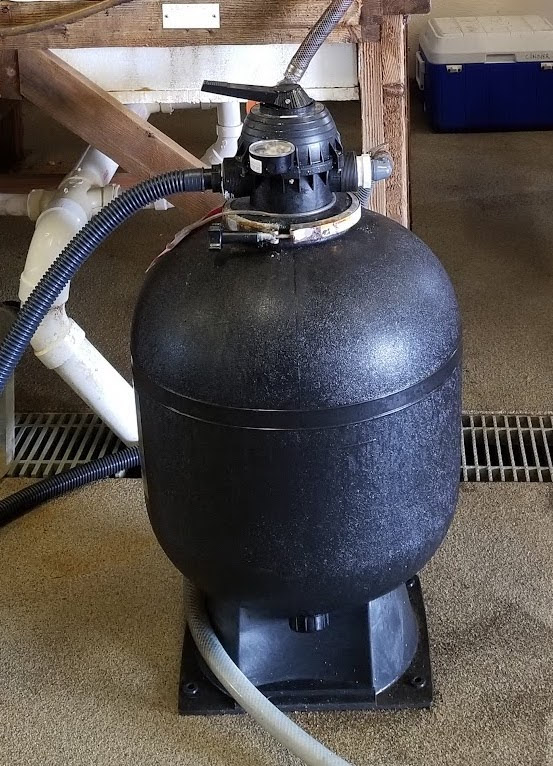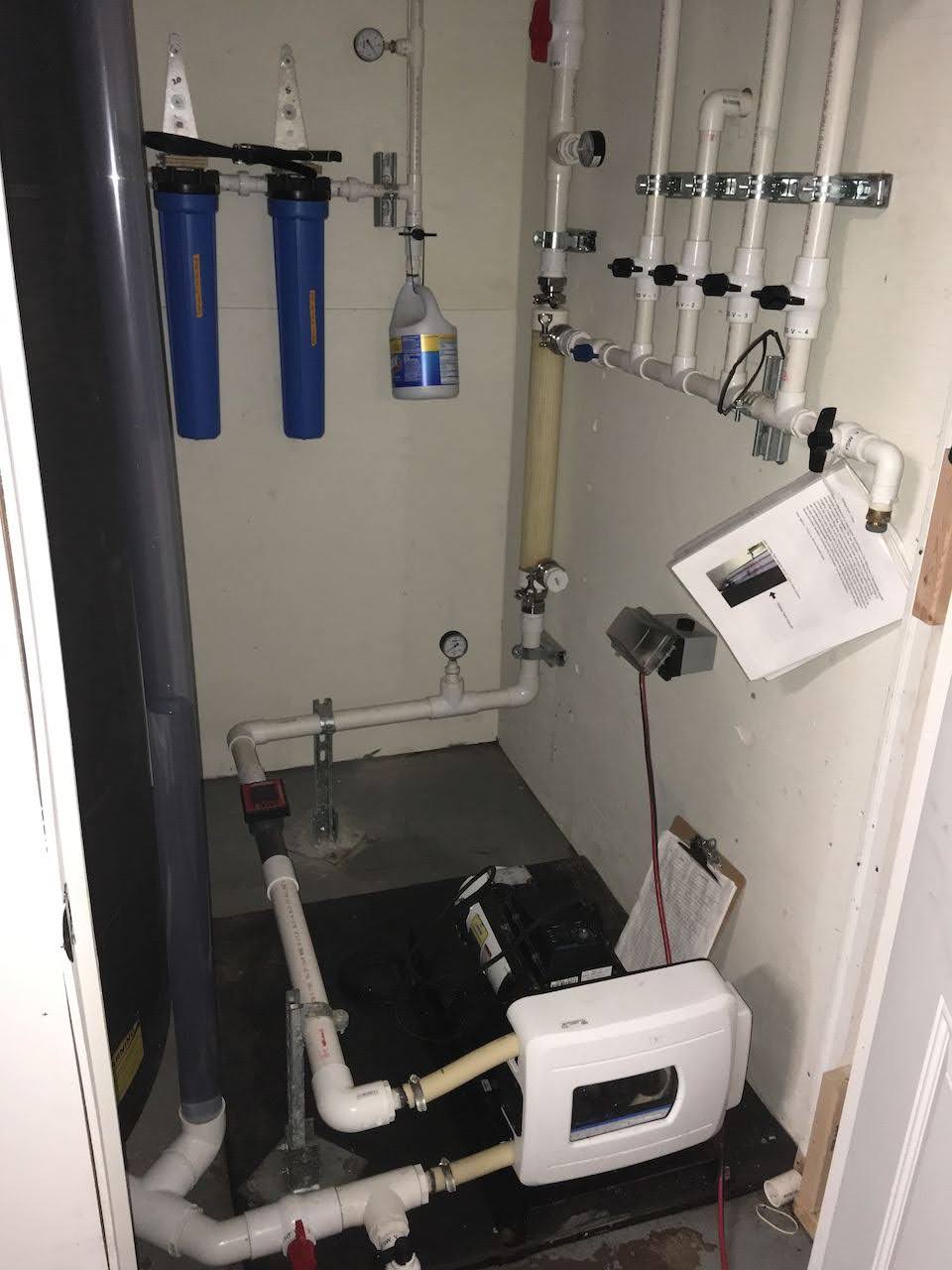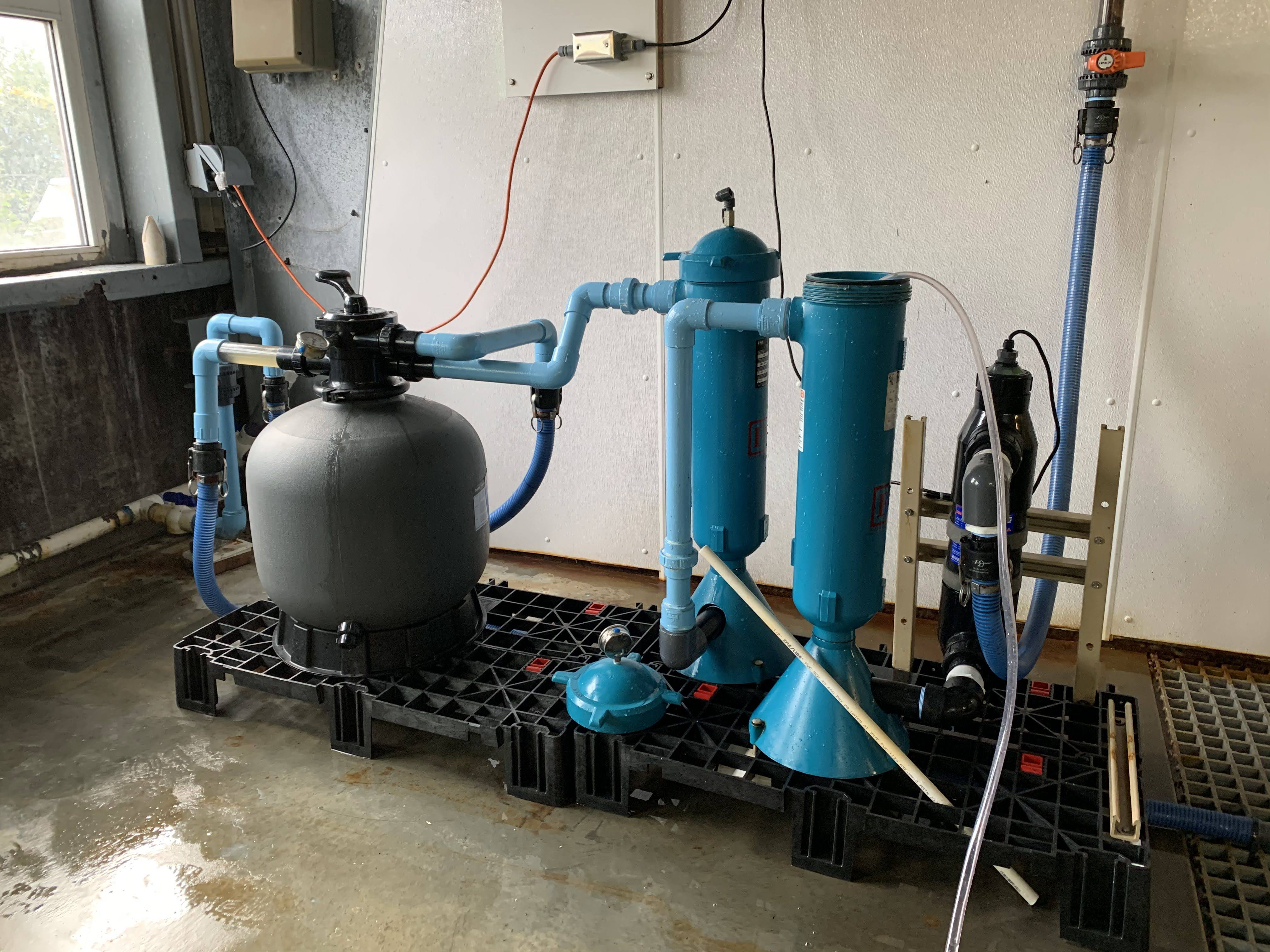It’s recommended that the water be filtered to at least 0.2 microns before entering your culture tanks.
Back to: Hatchery Equipment
Once the seawater is in your facility, it’s important to free it of any other living organisms by using a filtration system. The water you collect will ultimately end up in your culture tanks, which are designed to perfectly support kelp growth: lots of light, nutrients, and the perfect temperature. These growth conditions are ideal for kelp, but they’re also great for a lot of other unwanted organisms as well. These potential organisms can outcompete and, if unchecked, overwhelm your kelp seed, making it very important to rid them from the water system from the start.
This is where filtration comes in. It’s recommended that the water be filtered to at least 0.2 microns before entering your culture tanks. There are many different ways to filter or sanitize seawater. Check the specifications on the filter you choose to see how/if the water should be pretreated prior and if other equipment will need to be purchased with it.
Some common filtration systems include:
-
Sand and bead filters
-
Bag filters
-
Cartridge filters
-
Hollow fiber filters
-
Autoclaving
-
Bleaching and neutralizing
-
UV filtration
Mechanical filtration (sand, bead, bag, cartridge, and hollow fiber filters) will remove sediments and organisms that could negatively affect your kelp seed. Chemical and biological filtration (UV, autoclaving, and bleaching) will kill any living organisms if used properly, but they don’t filter out sediments. If you choose to go this route, the sediment should either be filtered out or settled beforehand to make sure clean water is added into the tanks.
To move your seawater through a filter, you’ll need a pump. The type of pump you use depends on your filter type, as different filters will pass water at different rates. Be sure to check the user manual of the pump to determine the optimal pounds per square inch (PSI) and flow rate is compatible with your filter before making your purchase.
If you plan to use a valve to control the flow of water coming from your pump into your filter, always install the valve after the pump. You do not want to have your pump accidentally sucking air.
GreenWave Tip
In the GreenWave hatchery, cartridge filters are our first line of defense. We use a simple submersible pump that can pump around 250 gallons per hour (gph) to move the water through the cartridge filters. Then our seawater makes an additional pass through a hollow fiber filter which filters it down to 0.05 microns before entering the culture tanks. The sensitive nature of this filter means it cannot tolerate sudden bursts of high pressure. A peristaltic pump is perfect for this situation, because the flow of water can gradually be increased or decreased with a dial.


